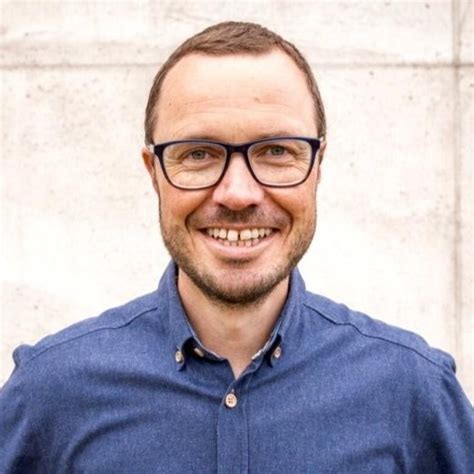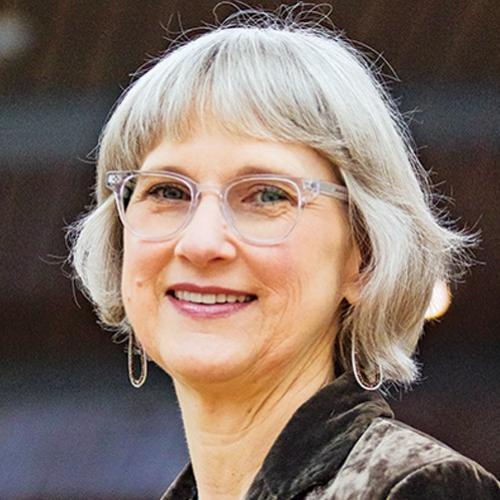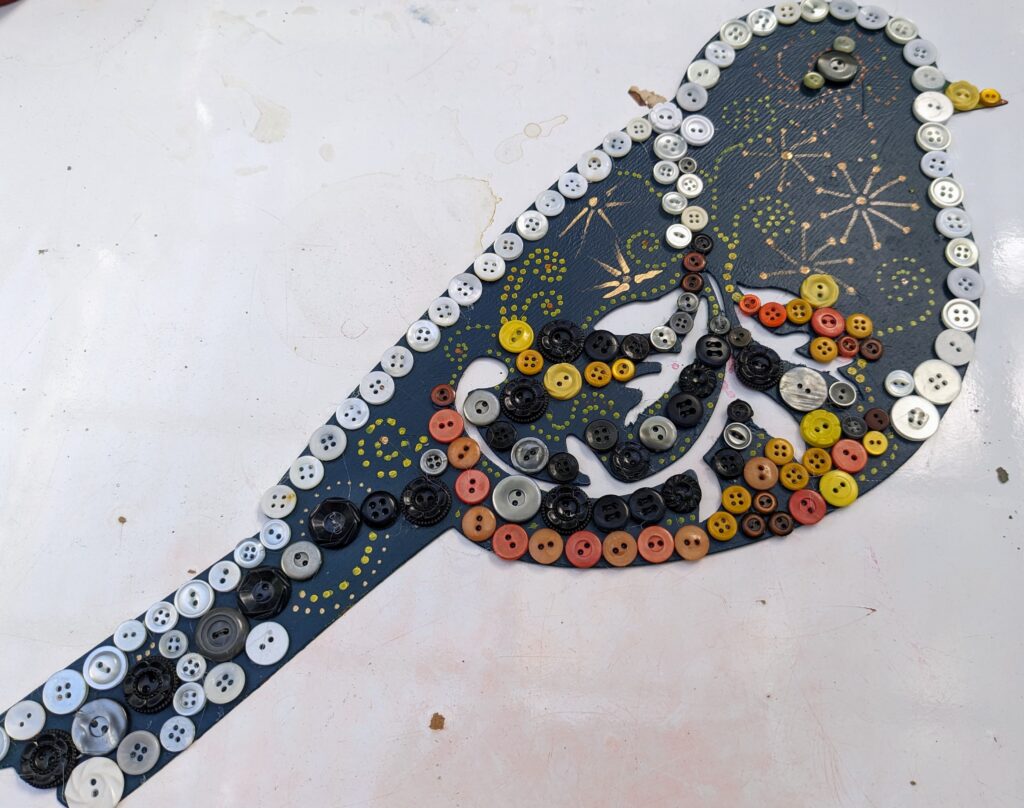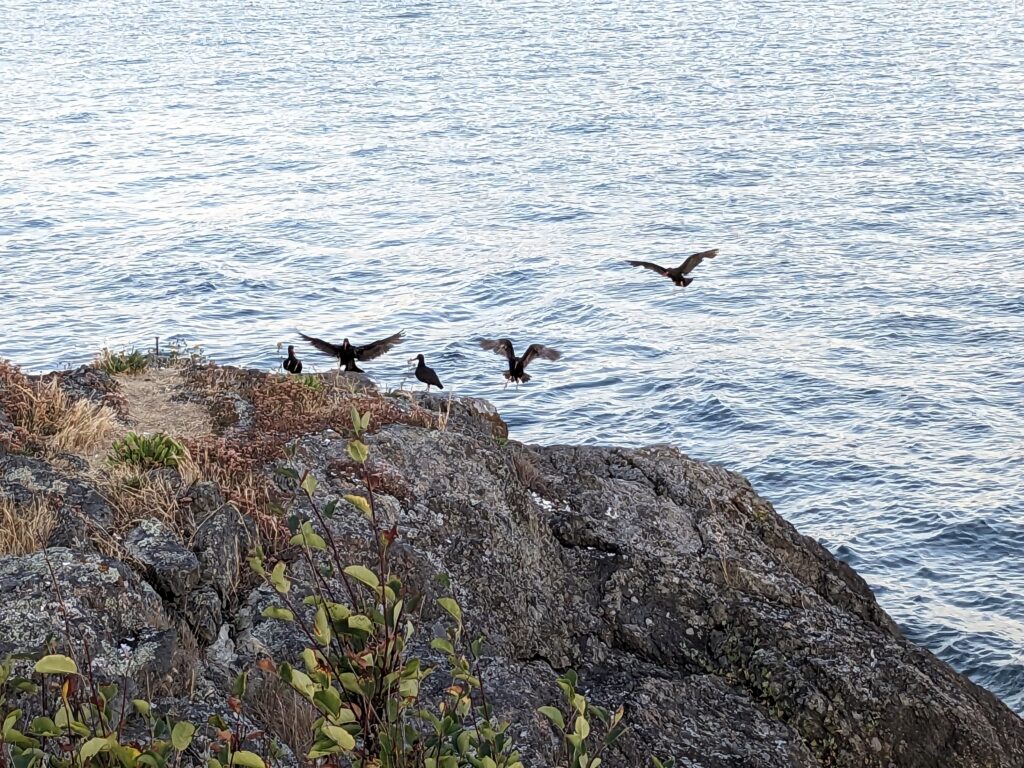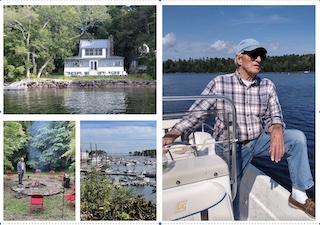Introduction
Since Liberating Structures (LS) were first launched into the world, they generated creative energy in practitioners around the world to create new ones. Some people identified gaps that they found in the repertoire. People generated alternatives to existing structures. Adjacent communities saw opportunities to cross pollinate their approaches with LS. We experienced a flowering of new LS.
Most efforts were informal. New structures were passed around between practitioners but rarely documented and intentionally tested. There was some sense that a structure had to be “approved” in order to be “included.” Yet within the distributed LS network, there was no formal mechanism to do this. So collections emerged (e.g. on the LS website) with structures ranging from well defined and tested, to those only a handful of practitioners knew and practiced.
A conundrum? Not really. To be a structure it must:
- address the ambitions of LS (see image below) to the highest degree possible
- be recorded into the LS template (shared below and which has been updated this year as Keith McCandless and I write a new LS book – stand by!), and,
- be practiced, integrated and improved and finally SPREAD. By spread, we mean that the developers of new LSs actively share their offerings through immersions and use in their work.
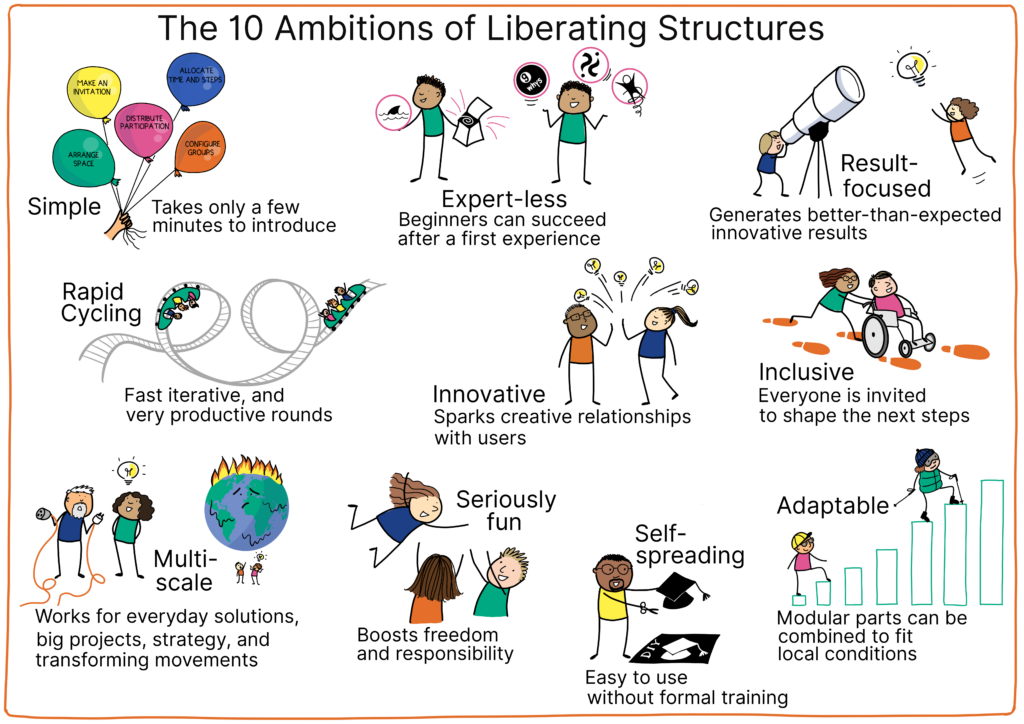
There is no formal way to “get new LSs into the repertoire.” Currently there are some Google docs and a Trello board capturing some of them, but it is neither a complete list, nor are all the LSs fully formed. Some folks have forged ahead and made design card decks and included the new LSs they found useful. Holisticon and The Liberators got things started with beautiful cards. And more!
In the new LS book, we are including 10 of these many new LSs and we have made sure to note any online adaptations. (We did that for the original 33 as well!). There was no attempt to be comprehensive but rather to show examples of the great LS flowering. And there was no intent to exclude any others. There is an abundance of adaptations and inventions embedded in our network of LS practice. The best thing we can do is get creative. LS are always adapted and are used adaptively.
Adapting
Before we create new LSs, consider adapting existing ones. That alone may fill the gap. Here are some ways to adapt that we are including in the new LS book.

I Have a New LS and I Want To Share It
Great! Here are our suggestions!
- Write up your LS using the template below. Check out an example of the template in use at the bottom of this post. Include any online adaptations that are needed. Tip: Work with a partner for more fun and ease.
- Share your draft with both experienced and novice users. Experienced users may help you refine and new users are the acid test. If they can reliably reproduce the benefits of the structure, you are doing a good job. Tip: when you can simplify, DO IT! (Do as I say, not as I sometimes fail and do!)
- Refine your draft again and use it/have others use it as much as you can. Ask for their feedback and refine again. We have been constantly surprised at how much iteration improves the design of a LS. As they say, “lather, rinse and repeat!”
- Develop an icon and collateral materials if you can. The visual aspects of the LS repertoire are part of what makes LS special.
- Spread the word. Share your structure with user group gatherings and with your friends and colleagues.
LS Template
Instructions are in [brackets]. You can find a copy of the template here which you can copy and fill in. There is an example following the template. Have fun!
[Icon] [TITLE OF LS]
[Tagline: express its essence. Simple, directive, in title case] e.g. Engage Everyone Simultaneously in Generating Questions, Ideas, and Suggestions]
[Duration] E.g. 15 min
[Relevant Quote that enlivens the structure with attribution] Tell me and I will forget. E.g. Teach me and I may remember. Involve me and I learn. Benjamin Franklin
WHAT IT MAKES POSSIBLE
[A brief explanation of what you can accomplish using the structure. When a LS brings one of the LS Principles to life, make note of it here. Begins with a description of the LS in 1-2 sentences. Goes on to describe the benefits of the LS in third person (ok to use second person, addressing host and group).]
TAKING IT ONLINE
[This new section lays out roles and online adjustments to the five microstructural elements. If relevant, it calls out shifts in the interaction dynamic experienced by the participants. Third person (ok to use second person, addressing host and group, e.g., “Use it when…”).]
FIVE STRUCTURAL ELEMENTS—MIN SPECS
[What to do and how to do it, step by step. Where there is a difference between F2F and Online, you will see both options listed. Where relevant, the tech tasks are included.]
1. Structuring Invitation
- [First-person statement for the host to read out to the group that flows from the description and what is made possible. This is then used in the Steps below, reducing duplication.]
2. How Space Is Arranged and Materials Needed
[Identify for each of the bullets below. Note online differences. All noun phrases/sentence fragments. Online accommodations in brackets and highlighted in light gray.]
- Room Setup: [Physical/virtual space requirements, furniture setup] E.g.: Space for participants to work face-to-face in pairs and foursomes [breakout rooms]
- Tools & Supplies: [Tools for recording/sharing]
- Display: [What to display, what display materials are needed. Identify visual materials to share the steps and/or prompts because online our attention may wane.]
3. How Participation Is Distributed
[All noun phrases/fragments]
- Roles: [which roles need to be filled, including differences online with tech hosts)]
- Minimum: [minimum number of participants, if applicable]
- Inclusion: [Default: Everyone is invited and has equal opportunity to contribute. Adjust as needed.]
- 4. How Groups Are Configured
[All noun phrases/fragments]
- Configuration: [alone, in pairs, whole group, etc.]
- Group Structure: [Specific group sizes, specifications for membership]
- Formation: [How groups are formed]
5. Sequence of Steps and Time Allocation
- Name of Step 1 (X minutes). [Describe what happens in third person.
- Format participant-focused language (directions, questions) as bullet points. Online instructions in square brackets and light gray shading.
- The name of the step is in title case. Capitalize most words after hyphens, e.g. “Plan Follow-Up.”
- Format name of step as noun or directive, e.g. “List Items” (not “Listing Items”).
- Do not number steps.
- Capitalize steps when referring to them in other sections.
- The first step is always Intro (1 min). Share the structuring invitation. Display supporting materials where everyone can see them.]
WHY? PURPOSES
- [Primary reasons for using this Liberating Structure. Directives in second person. [E.g.: Engage every individual in searching for responses to a challenge]
TIPS AND TRAPS
[Useful advice for ensuring the best possible outcomes including attention to online.]
Tips:
- [Statements in third person. Complete sentences ending with a period].
Traps:
- [Identify what the trap is. [Statements in third person. Complete sentences ending with a period.]
RIFFS AND VARIATIONS
[Alternatives or embellishments for you to try and ideas for designing others. Options for complementary LS and frequently used strings. ]
- [Statements in third person. Complete sentences ending with a period.]
PRACTICAL APPLICATIONS
[A few ideas and real world use cases to inspire you to find opportunities that exist in your context.]
- [Complete sentences with a period.]
- [Standalone bullet points. Have to be differentiated from purposes. (If an example doesn’t fit here, move it to purposes.)]
ATTRIBUTION
[Our most immediate sources of inspiration or invention. There are many additional rhizomatic connections to the deep and rich traditions in facilitation, organizing, complexity theory and organizational development.]
- Name(s) or one key source
COLLATERAL MATERIALS
[Useful presentation materials and templates plus illustrations of Liberating Structures in action. They can be projected or used as handouts F2F and used as slides or whiteboard templates online. For LS with multiple dimensions and phases, we recommend participants draw the image by hand.]
- [Images or instructions that are used in running the structure with captions.]
- [Templates to capture ideas and actions generated by participants (with space for sticky notes.)]
Example of a Newly Formatted LS
Calmly Prepare and Sharpen Observations for the Work Ahead
If there were a little more silence if we all kept quiet…
maybe we could understand something. Federico Fellini
18-20 min
WHAT IT MAKES POSSIBLE
In Spiral Journal, participants draw a spiral and respond to four open-ended prompts to focus their thoughts, and enact the LS principle Practice Self Discovery Within a Group. This structure helps us reflect calmly on challenges or opportunities, unleashing our most creative ideas. When shared, these responses reveal patterns and potential new directions for our work. This approach also creates a comfortable space for quieter people to contribute to planning next steps.
TAKING IT ONLINE
Spiral Journal works well as a way to calmly start an online meeting. It helps people transition from their previous activities, supports both individual and group reflection, and reintegrates physical activity into online interaction.
FIVE STRUCTURAL ELEMENTS—MIN SPECS
1. Structuring Invitation
- Before we jump into talking about our topic, let’s take a few minutes to collect our thoughts. We are going to do a quiet activity to prepare for the work ahead. By digging deeper into our imaginations, we will uncover a range of ideas and options.
2. How Space Is Arranged and Materials Needed
- Room Setup: Space for participants to form pairs and trios [breakouts of 2-3]
- Supplies: Paper and a pen or pencil for each participant
- Display: Supporting materials to reinforce invitation, prompts, and steps
3. How Participation Is Distributed
- Roles: Host, participants [tech host]
- Inclusion: Everyone is invited and has an equal opportunity to contribute.
4. How Groups Are Configured
- Configuration: Alone, pairs or trios, whole group
- No minimum group size
- Formation: Participants choose their own groups. [Randomly assign participants to breakout groups.]
5. Sequence of Steps and Time Allocation
- Intro (1 min). Share the structuring invitation. Hand out paper. [Display instructions where everyone can see them and ask everyone to find a piece of paper.]
- Spiral Setup (1-2 min). Instruct participants to take a sheet of paper and demonstrate the process:
- Fold it in half twice to create four equal quadrants.
- Draw a small dot at the center of the page where the folds intersect.
- Starting from the center dot, slowly draw a spiral outwards. Keep the lines very close together.
- Generate Ideas (8 min). Assign a prompt for each quadrant. For example:
- Upper left: My absurd, impractical ideas are…
- Upper right: My bold yet actionable ideas are…
- Lower left: My common sense ideas are…
- Lower right: My low- or no-cost ideas that can be acted on immediately are…
Participants take 2 minutes per quadrant to write their responses.
- Review and Select Ideas (2 min). Invite participants to read through their responses and circle one or two ideas that stand out or surprise them.
- Group Sharing: Pair or Trio Discussion (3 min). Participants form pairs or trios [breakouts of 2 or 3] and share the ideas they circled with each other, sharing why those ideas stood out for them.
- Group Sharing: Collective Insights (3 min). Everyone returns to plenary. Invite a few participants to share any key insights, observations, or common themes that everyone should hear [in Chatterfall]. Record these insights where everyone can see them.
WHY? PURPOSES
- A slow and deliberate activity can improve the depth and quality of responses.
- A wider range of options can arise from inviting different types of ideas.
- Freewriting without judgment can reveal unexpected associations.
- With time to reflect, each participant can access a huge store of memories and assemble them in novel combinations.
TIPS AND TRAPS
Tips:
- All spirals are perfect, whether neat or wobbly. The action of drawing is the important part.
- Explain afterwards that there is no other purpose to the spiral other than to focus our attention and be present while drawing.
- Encourage everyone to write down all their ideas without filtering or critiquing them. Then they can choose what they want to share (and nothing more).
Traps:
- Interruptions can break people’s concentration, which is essential for Spiral Journaling. Act like a librarian! Do everything you can to avoid interruptions while participants are drawing and writing.
RIFFS AND VARIATIONS
- You can adapt the four prompts for different situations. For example, a group making a transition or working through a loss could respond to these prompts:
- Yes, it is true that…
- It is hard because…
- I will always remember, I will never forget…
- Now, it may be possible for me to…
- Use Spiral Journal at the beginning of a meeting or workshop and link the sequence of prompts directly to the purpose of the session. See examples linked to clarifying context and expanding options shown in Collateral Materials.
- To close in plenary, invite participants to consider how the response adds to a previous activity or informs the next. Ask, “Based on these responses, what seems possible now?”
- Play gentle background music while people draw their spirals.
PRACTICAL APPLICATIONS
- Use Spiral Journaling to start a gathering where there will be diverse views and opinions. The spiral centers attention, then allows people to see where there are common or divergent perceptions of a challenge or situation.
- Help a group slow down and generate fresh ideas or reflect more deeply on a challenge.
ATTRIBUTION
Developed by Fisher Qua and Anna Jackson with inspiration from Lynda Barry (cartoonist)
COLLATERAL MATERIAL

Instructions to demonstrate preparing a page for Spiral Journaling.

A sample page layout for Spiral Journal. The four open sentences are designed to expand the depth and breadth of options to be considered.


